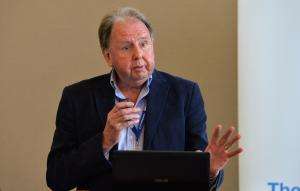Focus on practice 'failures' rather than context in review into Arthur Labinjo-Hughes and Star Hobson deaths is damaging, says social work professor

Published by Professional Social Work magazine, 31 May, 2022
Once again we have a report which has been prepared with all the benefits of hindsight with the reviewers having the opportunity never available to very busy practitioners of concentrating for weeks and months on one child with all the information now collated and laid out for them.
The government-commissioned national safeguarding review into the murders of Arthur Labinjo-Hughes and Star Hobson published last week gives only passing attention to the context in which the social workers, police officers, doctors and others were working. How busy were they? What other work which may have been more urgent and immediate were they undertaking at the time?
Was it very difficult getting in contact with other workers and agencies? The impact of Covid and lockdowns are mentioned but then largely dismissed. Ignored too is the context of cuts, commercialisation and castigation of workers.
They have cumulatively undermined those who work with children, made arrangements for joint working even more difficult, and created overwhelmed workers where the priority is to close cases down quickly so that they can take on the new work flooding their way.
This would not have been helped in Bradford, where Star Hobson was killed, when following the death of Hamzah Khan the government's children's minister rejected the first serious case review report in 2013 because it did not allocate accountability to any children's workers for Hamzah's death. The clear message was that there has to be a social worker or another children's worker to blame.
It should not be a surprise that there is now major difficulty in recruiting and retaining social workers, health visitors and other key children’s workers. It has resulted in a less experienced, more unstable, exhausted and overwhelmed workforce.
It is also the very predictable consequence of the government creating greater poverty and stress for families with big cuts in the help which might previously have been available.
And when there are children who need protecting, spotting those children is even harder as government-imposed changes mean schools as academies are more detached from joint working, health services have been fragmented, and planning and oversight of services locally has been undermined by the abolition of local safeguarding children’s boards.
This review lacks historical perspective. It fails to allocate any responsibility to the government for more than a decade of damaging the public services which help and protect children.
And the review comes forward with recommendations which will take time and have the potential for more churn and change without addressing the fundamental reasons why it is not possible to implement all the learning we already have about how to protect children.
The overwhelming focus on what are now presented as the failures in the practice of police officers, social workers, doctors and others is hardly likely to lead to more people wanting to start and stay working with children and families.
We know how to protect children, albeit no one has the crystal ball often claimed by government ministers which would make it possible to stop all the terrible experiences of children behind closed doors.
We have protected children more successfully in the UK than elsewhere but it is being undermined and overwhelmed by government-created cuts and churn, which is the big elephant in the room which if not unseen is at least hardly mentioned.
Dr Ray Jones is Emeritus Professor of social work at Kingston University and St. George's, University of London
Read about the safeguarding review's proposals for reforming child protection here
Read a letter to social workers about reforming the whole ssytem system from thechair of England's Independent Review into Children's Social Care here
Read a breakdown of the key findings from the independent review here
Read about research stressing the link to poverty and child abuse and neglect here
